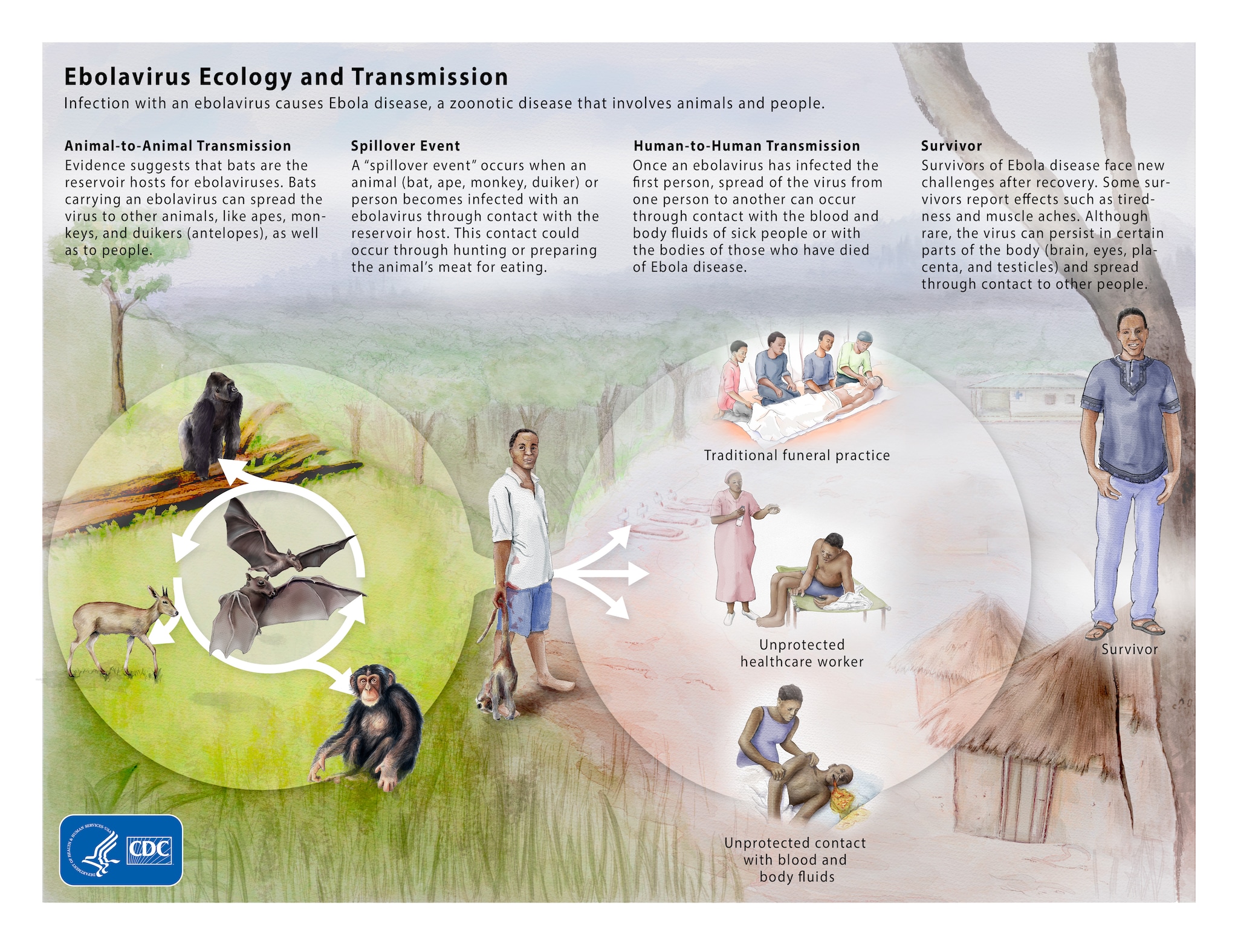What is Ebola Disease?
Ebola disease is the term for a group of deadly diseases in people caused by four ebolaviruses within the genus Ebolavirus. There are occasional Ebola disease outbreaks in people, occurring primarily on the African continent.
The name of each of the four ebolaviruses that cause illness in people, with their associated viral species1 and disease name2 can be found below:
- Ebola virus (species Zaire ebolavirus) causes Ebola virus disease
- Sudan virus (species Sudan ebolavirus) causes Sudan virus disease
- Taï Forest virus (species Taï Forest ebolavirus, formerly Côte d’Ivoire ebolavirus) causes Taï Forest virus disease
- Bundibugyo virus (species Bundibugyo ebolavirus) causes Bundibugyo virus disease
There are two additional ebolaviruses that are not known to cause disease in people. Reston virus (species Reston ebolavirus) is known to cause illness in nonhuman primates and pigs, but not in people. Bombali virus (species Bombali ebolavirus) was recently identified in bats, but it is unknown if it causes illness in either animals or people.
Emergence of Ebolaviruses
Ebolaviruses were first discovered in 1976 when two consecutive outbreaks of fatal hemorrhagic fever occurred in different parts of Central Africa. The first outbreak occurred in the Democratic Republic of Congo (formerly Zaire) in a village near the Ebola River, which gave the virus its name. The second outbreak occurred in what is now South Sudan, approximately 500 miles (850 km) away.
Initially, public health officials assumed these outbreaks were a single event associated with an infected person who traveled between the two locations. Scientists later discovered that the two outbreaks were caused by two genetically distinct viruses: Zaire ebolavirus and Sudan ebolavirus. After this discovery, scientists concluded that these viruses came from two different sources and spread independently to people in each of the affected areas.
Following the discovery of these ebolaviruses, scientists studied thousands of animals, insects, and plants in search of the source, or reservoir host. It is believed that African fruit bats are likely involved in the spread of ebolaviruses and may even be the reservoir host. Scientists continue to search for conclusive evidence of the bat’s role in transmission of ebolaviruses. The most recent ebolavirus to be detected, Bombali virus, was identified in samples from bats collected in Sierra Leone.
Like other viruses of its kind, it is possible that the reservoir host animal does not experience serious illness despite being infected with the virus. Ebolaviruses are likely maintained in the environment by spreading from host to host or through intermediate hosts or vectors (organisms that can spread pathogens from infected animals to other living organisms). Infected animals carrying the virus can transmit it to other animals, like apes, monkeys, duikers (antelopes), and people. Most infected animals will not get sick; however, ebolaviruses are known to cause severe illness in nonhuman primates (such as monkeys, gorillas, and chimpanzees) similar to Ebola disease in humans. Once an ebolavirus has infected a person, the virus can spread to other people through contact with the body fluids of the infected person. Learn more about Ebola disease transmission.
Viral and epidemiologic data suggest that ebolaviruses existed long before the initial recorded outbreaks occurred. Factors like population growth, encroachment into forested areas, and interaction with wildlife (such as animal meat consumption) may have contributed to the spread of ebolaviruses to people.


